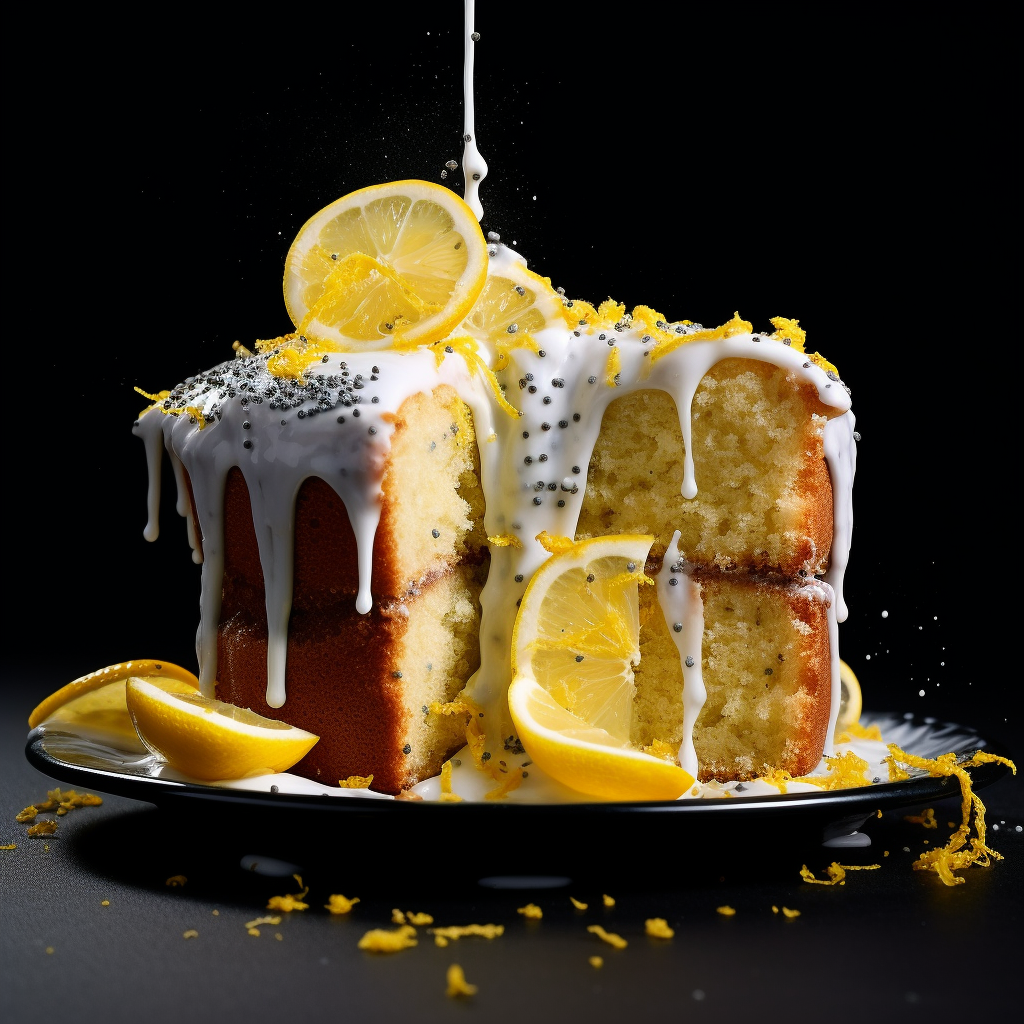Dance, Dance Til’ You’re Dead: The Plague of 1518 and Lemon Poppy Cake
In the summer of 1518, in the town of Strasbourg, Alsace (now part of France also where my family is from), a bizarre and mysterious phenomenon unfolded.
A woman named Frau Troffea stepped gracefully into the streets and began to dance uncontrollably. What started as a solitary and seemingly harmless dance soon escalated into a frenzy. She danced for days on end without rest, and her strange behavior began to spread creep and crawl and spread to the rest of the unwitting citizens.
Within a mere week, 34 more people joined her! Flailing and frenzied. It was said that this Dance Macabre, grew to over 400 within a month.
The dancing was relentless and often accompanied by hallucinations, sweating, and exhaustion. Some dancers even suffered heart attacks or died from sheer physical exertion.
Authorities were baffled by this inexplicable event and sought various remedies, including taking the afflicted to a mountain shrine and even building a stage to encourage them to dance more. Sure, help the frenzied folks dance… more?It was believed that more dancing would help cure the dancers, but it only intensified the problem. Ummm dear doctors I have an empty glass that needs some whiskey if I am able to summon your spirits back, so that you may refill my glass with more, spirit.
The epidemic lasted for several months, and some believe it may have been caused by ergotism, a condition resulting from consuming bread made from rye infected with the fungus Claviceps purpurea. This fungus contains alkaloids similar to LSD, leading to hallucinations and uncontrollable movements.
This is also a theory, and folks I underline theory, for the frenzy of the Salem Witch Trials. These stories, at the end of the day, are stories. And while I have researched them tirelessly in the middle of full-time jobs and crushing sadness, this Dance Macabre and the Witch Trials both remain a mystery to me and everyone that’s tried to find a scientific answer to solve them.
Since I feel that a rye cake would be gross, and I don’t quite feel like a rye bread recipe at the moment, I’ve created a poppy seed cake. You know, cuz, like poppy… well look stay innocent if you don’t get it…
Vegan Lemon Poppy Seed Cake
Ingredients:
For the Cake:
2 cups all-purpose flour
1 cup granulated sugar
2 tsp baking powder
1/2 tsp baking soda
1/4 tsp salt
Zest of 2 lemons
1/4 cup lemon juice
1/2 cup unsweetened applesauce
1/2 cup unsweetened soy milk (or any plant-based milk)
1/3 cup vegetable oil (I like canola)
1 tsp vanilla extract
2 tbsp poppy seeds
For the Lemon Glaze:
2 cup powdered sugar
4-6 tbsp lemon juice
Zest of 1-2 lemons
Instructions:
Preheat your oven to 350°F (175°C) and grease a 9-inch round cake pan.
In a large mixing bowl, whisk together the flour, sugar, baking powder, baking soda, and salt.
Add the lemon zest, lemon juice, applesauce, almond milk, vegetable oil, and vanilla extract to the dry ingredients. Stir until well combined.
Gently fold in the poppy seeds.
Pour the cake batter into two 8” inch greased cake pan and spread it evenly.
Bake in the preheated oven for 25-30 minutes or until a toothpick inserted into the center comes out clean.
While the cake is baking, prepare the lemon glaze. In a small bowl, whisk together the powdered sugar, lemon juice, and lemon zest until you have a smooth glaze. Adjust the consistency by adding more lemon juice if needed.
Once the cakes are done, remove them from the oven and let them cool in the pan for about 10 minutes. Then, transfer it to a wire rack to cool completely.
Drizzle the lemon glaze over the cooled cakes and sprinkle some poppy seeds you fancy ass bitch!
If you do this when they are warm the heat will remelt the sugar and make them either too soggy or just moist. I know this is a terrible instruction. But I want to caution you from experience that the temperature of you cake has the chance of hurting a delicate glaze. You want a runny glaze but try to let the cake cool as much as possible or else you’re just pouring glaze straight into the center of a sponge and you want to lightly coat the middle of this cake so that it’s evenly moist. Then you want to place the second cake on top and have a glaze that will run gently over the sides giving you that oh so glorious Bake-Off look. BTW you don’t need to do a double layer cake. You can pour the whole thing into (1) cake pan and be done with it. I am just extra fancy.
Slice and serve your delicious Vegan Lemon Poppy Seed Cake.
This vegan cake is a delightful blend of citrusy flavors and the crunch of poppy seeds, making it a perfect dessert to accompany the historical tale of the "Dancing Plague of 1518." It's a modern twist on a classic recipe that will surely be a hit with vegans and non-vegans alike. Enjoy your cake while pondering the mysteries of history!
A Note on Cooking with Different Pans and What Your Grandma Never Told You…
Cooking times can vary when using different pan sizes, even if the batter amount is the same. The main factors affecting cooking times are the pan's size and shape, which can influence how heat is distributed and how the cake bakes.
Here are some general guidelines:
Smaller and Deeper Pans:
If you're using a smaller, deeper pan, like an 8-inch round cake pan, the batter is thicker, and it takes longer to heat through the center of the cake. This can result in longer baking times compared to a wider and shallower pan with the same amount of batter.
Larger and Shallower Pans:
If you're using a larger, shallower pan, like a 9x13-inch rectangular pan, the batter is spread out more thinly. This allows for more even and faster heat distribution, which can result in shorter baking times.
Temperature Adjustment:
To accommodate different pan sizes, you may need to adjust the oven temperature. Smaller, deeper pans may benefit from a slightly lower temperature to ensure the center cooks without overbaking the edges. Larger, shallower pans may require a slightly higher temperature to encourage browning and even baking.
Visual Cues:
Regardless of the pan size, always rely on visual cues and doneness tests like inserting a toothpick into the center of the cake. When the toothpick comes out clean or with a few moist crumbs, the cake is done.
Monitor Closely:
It's essential to monitor your cake closely, especially the first time you bake it in a different-sized pan. Check for doneness a few minutes earlier than the original recipe suggests and adjust from there.
In summary, while using the same amount of batter, cooking times can vary due to differences in pan size and shape. Keep an eye on your cake, use visual cues, and consider adjusting the oven temperature as needed to ensure the cake bakes evenly and to perfection.


